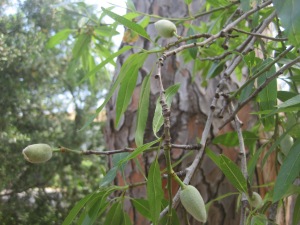How does one mark the arrival of spring when the entire winter is full of flowers? With more flowers for one thing, and the late-night fragrance of citrus blossoms teasing into my bedroom window. But there are other reminders that, over the thousands of years when survival for the people living in the Galilee was linked to agriculture, the advent of spring had more compelling developments.
In Guns, Germs and Steel, Jared Diamond explains how the Mediterranean climate in the Fertile Crescent, in whose gracious curve the Galilee is set, created the conditions for the development of its indigenous plants. Adapting for survival in the short, unreliably rainy winters and long, reliably hot, dry summers, these plants invested their energies into producing robust seeds encased in durable coverings that would protect them for as long as necessary until a sufficient rainfall called them into action. The prehistoric hunters and gatherers of the area learned to pluck the nutritious kernels that were hidden in ears of grain, starting a millennia-long process of cultivation with ramifications far beyond this blog-scope.
Spring is the time when the seeds of many of these indigenous plants come into their own. In the fields, the grains of wheat are fully developed, yet still green and soft – ready to be harvested to produce farike. And the almond trees, whose blossoms settled like snowflakes just a few weeks ago, are showing their tender, fuzzy green seeds, which can be eaten whole, sour and refreshing.
In the months to come, the grains and the almonds will dry and harden, to re-enter the cycle in whatever form is their destiny. But for now, we can savor their vibrant, green potential – encapsulating the miracle of rebirth in yet another spring.
Please accept my warmest wishes for a wonderful Passover, Easter and/or Spring.

Thanks for the reminder of special Spring is in the Galilee. Another blog to forward to Gary! Sent from my iPhone tel +1202 320 1572